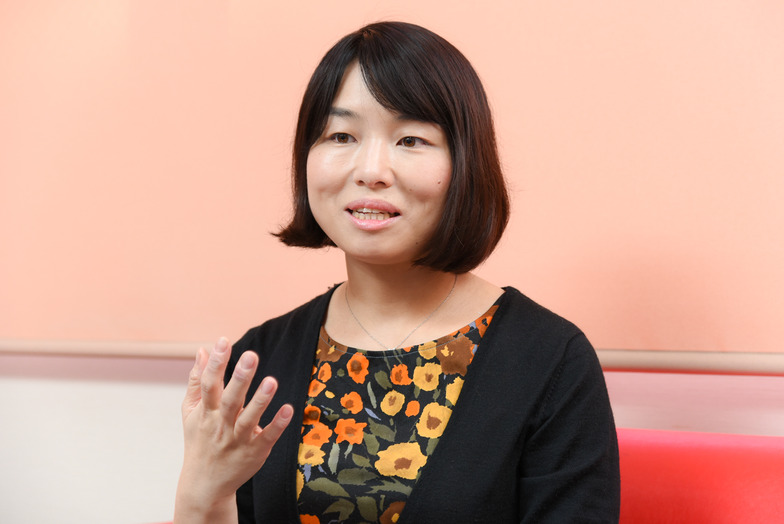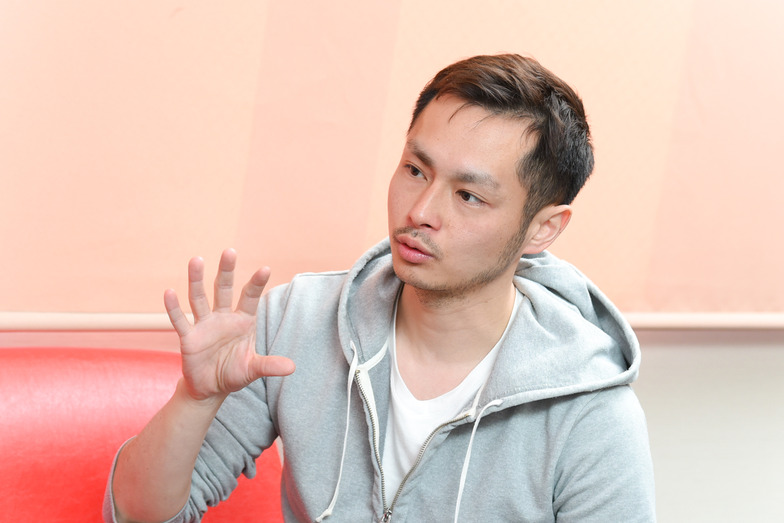The series "The Reality of 18-Year-Olds" delves into the present and future realities of 18-year-olds. As mentioned in the first article, we explore the "thoughts" of 18-year-olds—what they feel and what they want to convey to adults and society—unraveling the "values of a new era" that previous youth insight research has not revealed.
This time, we spoke with Kumi Imamura, Representative Director of the NPO Katariba, which has been providing career education to high school students for 15 years, and Yohei Kawabe, Representative Director of the NPO Ada Coda, which promotes "philosophical dialogue" – group discussions on questions without definitive answers – and is developing dialogue methodologies with 18-year-olds alongside Project18. Rei Nagi, a member of Project18 and the Dentsu Inc. Youth Research Department (Dentsu Inc. Wakamon), joined the discussion to explore approaches to engaging with 18-year-olds and the possibilities this holds.

(From left) Ms. Nagi, Ms. Imamura, Mr. Kawabe
Imagine how choices made at age 18 can shape your entire life
Nagi: With Project18, rather than focusing primarily on quantitative surveys, we want to delve into the genuine feelings and values held by 18-year-olds through direct dialogue with them. Katari-ba has positioned 18 as a crucial age in its activities for the past 15 years. Kawabe-san promotes philosophical dialogue across a wide age range, from children to adults, and will support this project as an external member. Together with these two individuals, we want to explore how we should engage with 18-year-olds.
Imamura: One of our core activities, "Katari-ba," has been ongoing since the organization's founding. Specifically, university student volunteers visit high schools and lead classes designed to spark motivation among high school students through dialogue based on a "diagonal relationship" – neither strictly vertical nor horizontal.
Nagi: What made you decide to start "Katari-ba"?
Imamura: Postwar school education has ensured quality through standards like teaching licenses and curriculum guidelines. However, precisely because it's a protected space, it can also become disconnected from society. I thought that by having outsiders enter this sanctuary of schools to teach, it could spark sensitive young minds to think broadly and apply their imagination to society.
Nagi: Do you discuss various themes, not just career paths?
Imamura: Yes, while we often teach within the framework of career education, it's not a place for choosing a specific profession. We live in an era where careers and life stages change every three years. In a society where the nature and types of work are constantly evolving, I believe what's crucial for teenagers who will lead the next generation isn't making early career choices, but preparing themselves to adapt to any kind of society. The idea behind "Katari-ba" is that connecting with society within the school setting can be a catalyst for changing high school students' perspectives.
Nagi: In terms of life crossroads, while 18 is significant, university graduation also marks a major turning point. Why did you consider changing the mindset of 18-year-olds and high school students more important than university students?
Imamura: In Japan, the curriculum guidelines are uniform up through high school. While school levels vary, the education system is structured under the same basic standards, ensuring equal access to education. Universities, however, are places for individual research. They are destinations reached after selecting something from numerous possibilities, where the exit is somewhat visible.
But few high school students can truly imagine how much their choices at 18 will shape their entire lives. I was like that myself. Many likely spend their high school days without ownership over their time, just going through the motions. I believed that if students could instead find meaning in their high school life and live each day purposefully, they would be able to envision their future concretely. This would allow them to approach their 18-year-old career choices with much more agency.
A conversation starting with "It's okay" draws out true feelings
Nagi: Katariba was launched when Mr. Imamura was a university student, right? It's interesting that you focused on 18-year-olds 15 years ago, but also that you focused on creating a space for mutual conversation – that is, "dialogue." Why did you choose to create a space for conversation rather than formal classes or lectures?
Imamura: Back then, I felt schools had become places where students memorized answers prepared by adults. But there should be plenty of questions without fixed answers. It would be valuable to have learning where we share our insights and think through answers together. That's why I felt we needed a space where everyone could explore their own answers through dialogue.
Kawabe: Talking with different people really broadens your perspective, doesn't it?
Imamura: Exactly. Talking with others can completely change your perspective. If we could incorporate more of that experience into learning, wouldn't learning become much more enjoyable?
Kawabe: By the way, at Ada Koda, we offer programs on philosophical dialogue for a wide range of ages, from young children to working adults. The foundation is an initiative called "Philosophy for Children," proposed by Matthew Lipman, who was then a professor at Columbia University. It's the idea that even young children can engage in dialogue about philosophical themes. Young children may have limited vocabulary, but strangely enough, they often arrive at conclusions that are simpler and more metaphorical than adults, yet similar in essence.
Nagi: Both Katariba and AdaCoda share the common point of helping people reflect on themselves through conversation with others, regardless of the other person's age. I remember feeling during my university days that humans truly live within relationships with other people. I really understand that sense of your own shape becoming clearer through contact with others.
Incidentally, I think there's always been this dynamic of "adults and children who struggle to communicate effectively." Like the disconnect between a boss and a new employee. A situation where they can't properly convey their intentions to each other, and something just feels off. Given how common this phenomenon is, I'm curious how you two engage in dialogue with young people. Are there any tricks or tips for understanding each other?
Kawabe: This example is more about children than young people, but when we talk about love, for instance, the topic of love can disappear within the first few minutes. The conversation doesn't go where I imagined, and it feels like being pulled along by a dog sled. Yet, as I desperately try to keep up with where the children are heading, we sometimes arrive at conclusions I never expected. That's the interesting part.
Imamura: Some might disagree, but in our case, I think it's crucial for adults to be conscious that we have more information than the younger children and to never forget our educational perspective. During dialogue, we imagine the other person's field of vision and viewpoint while adding our own thoughts. Our goal is to broaden the thinking of middle and high school students and boost their motivation, so we constantly think about framing questions that serve that purpose while engaging in dialogue.
Nagi: Is it like expanding the menu of options available to middle and high school students?
Imamura: It's more like presenting questions and information at the level of proficiency the student seeks, then working together to find the answers.
Nagi: So "Katari-ba" guides the general direction without laying down fixed tracks?
Imamura: We shouldn't lay tracks, but we also can't leave the other person behind. We aim for dialogue with the intention of sparking their own realizations.
Nagi: So no tracks, but more like guardrails? By the way, "Katari-ba" is part of high school classes, right? How do you approach students who seem unmotivated or don't speak up, especially in groups that aren't just the highly motivated ones?
Imamura: Exactly. From the start, we've been committed to holding "Katari-ba" within the school education system. That's because even students who seem unmotivated at first glance hold a variety of potential within them. When interacting with such students, young people like university students often become effective dialogue partners. Adults tend to jump straight into sharing what they know or feel compelled to give top-down feedback on their manners. While having adults who can say what needs to be said—rather than just scolding—is valuable, it can be incredibly boring for high schoolers.
College students and young people, being closer in age, can imagine why high schoolers find classes tedious and consider what kind of approach might engage them. Precisely because it's a "diagonal relationship" – neither strictly vertical nor horizontal – it's easier to gain the trust of high school students.
Kawabe: At Ada Koda, we have established rules for philosophical dialogue called "Safety." These include listening to the person you're talking with, waiting when they're thinking, stating your own opinion, knowing it's okay to say nothing, and considering whether your words might hurt others before speaking. By explaining these rules beforehand, we create an environment where people feel it's safe to speak up today.
Nagi: What we have in common is making the person we're facing feel "It's okay." Indeed, when interacting with young people at Dentsu Inc. Youth Research Department, I often find that creating a space where it's safe to speak up helps draw out their true feelings.
※Continued in Part 2








